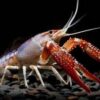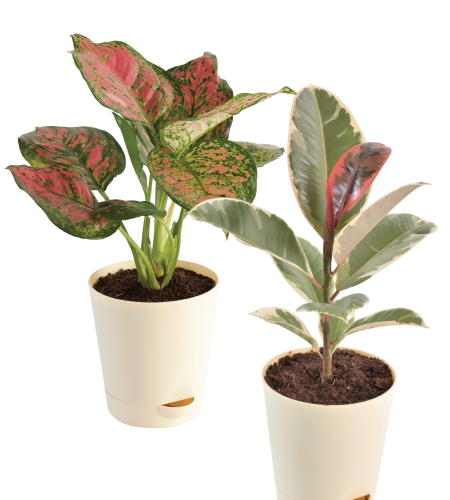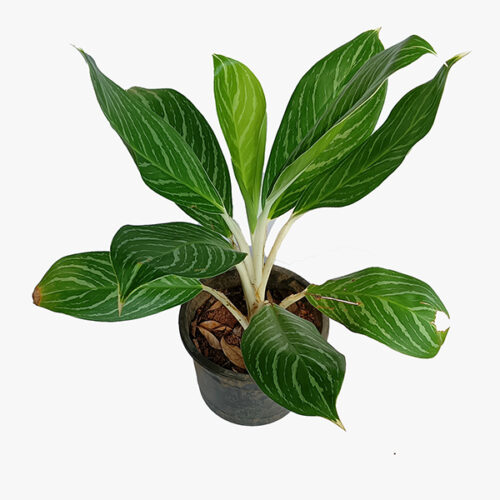Bucephalandra pygmaea [Tc] or Bucephalandra pygmaea is a simple yet beautiful Buce plant that is highly sought after for aquarium use (Bucephalandra). It is a rheophytic aquatic plant that can be found in Borneo’s tropical rainforests. Bucephalandra has a stunning appearance, is easy to care for, and is an essential component of any good aquascape system. Buce plants are not well adapted to growing in soil and rely on a strong root system to anchor themselves in high water flow. Instead, their roots are extremely effective at anchoring onto any surface, especially porous surfaces such as lava rock. Bucephalandra plants have a coping mechanism that causes them to lose some of their leaves if the water parameters change. This is the primary reason why Bucephalandra in aquariums may lose some of their leaves. This can happen as a result of algae growth in the tank or even fertilisation changes. Even if the Bucephalandra plant in your aquarium has lost all of its leaves but the roots and rhisomes appear healthy and firm to you, you should not be concerned because the leaves will gradually regrow over time. It is regarded as a low-maintenance aquarium plant. Bucephalandra species require little to survive.
Water temperature should be between 21.5 °C and 28 °C (71 °F and 82.5 °F) and well-filtered with proper flow. pH levels in water range from 6 to 8. Some hardness (GH) is required; preferably 5 GH or higher. Bucephalandra does not require nutrient dosing or pressurised CO2 injection to survive. However, adequate CO2 and nutrient levels will support its growth and promote leaf coloration. The amount of light required for this plant is primarily determined by what you intend to do with it. Light demand is adaptable. If it is only for decoration, low light would be the best option. It will grow slowly and will not have a lot of coloration. If you want faster growth and better coloration, you’ll need a medium to high light.
Many other exotic plants, including Bucephalandra, are on the verge of extinction as a result of deforestation. All we can hope is that they will find it in their hearts to protect the natural habitats of such wonders as Bucephalandras and many other plant species within their forests. Bucephalandra pygmaea develops dense mats on stream boulders in the tropical rainforest and is found in Bukit Kelam, West Kalimantan. It is propagated through tissue culture and is sold under the names Bucephalandra sp. ‘Wavy Leaf’ and ‘Green Wavy,’ as well as the erroneous name B. sp. “Melawi.” “Bukit Kelam” is a well-known and well-liked Bucephalandra in the aquarium hobby. The leaves on this medium-sized Bucephalandra are broadly spathulate, green to brownish-green, and quite soft, measuring about 5 cm long and 2 cm wide. The margin is wavy, and the underside of the leaf is whiteish green. This lovely epiphyte is low-maintenance, but it looks best with medium lighting and a good supply of CO2 and nutrients. Bucephalandra species are notoriously slow growers in general, but “Bukit Kelam” is an exception, growing relatively quickly. It rarely flowers in water, and the inflorescences have a white spathe. Submerged plants form an upright, branched, stem-like rhizome with numerous “aerial” roots. Occasional cutting of long shoots encourages stem branching, resulting in beautiful dense bushes with many heads. The cuttings can be secured to the hardscape and will attach to it via their roots. Emerged leaves are longer and wavy than submerged leaves. Bucephalandra pygmaea “Bukit Kelam / Sintang” is undoubtedly appealing in paludariums with damp air, which are ideal for creating rainforest stream biotopes.
Is it possible for Bucephalandra to receive too much light?
Bucephalandra has a low light requirement and can grow in even the darkest corners of your aquascape. Expose the plant to higher PAR levels to achieve faster growth and better coloration. Too much light (100 micromols of PAR) can, however, cause algae problems, particularly in slow growers like Buce. What are the most vibrant Bucephalandra species? There are few varieties that are typically green (e.g., Shine Green, Treasure, 2011), and the most appealing are those with dark navy blue leaves.


![Bucephalandra pygmaea [Tc]](https://elysianflora.com/wp-content/uploads/2022/02/107737.jpg)






Reviews
There are no reviews yet.